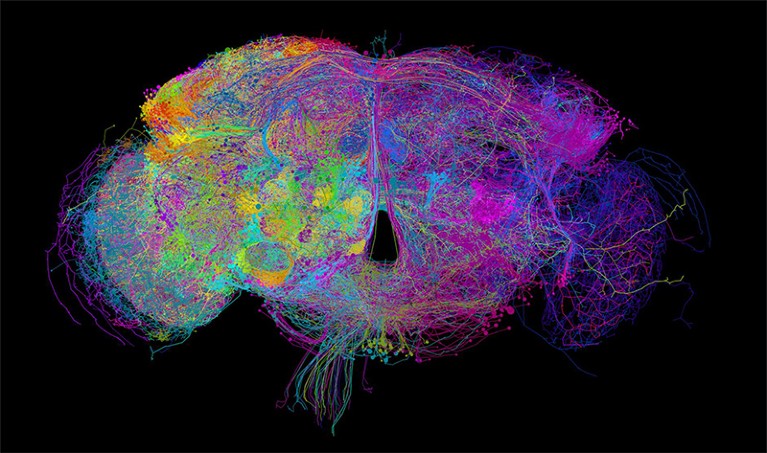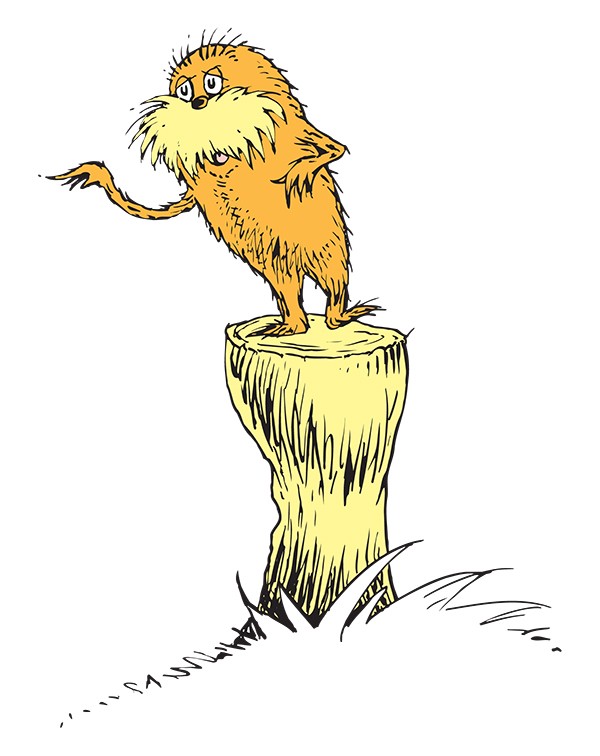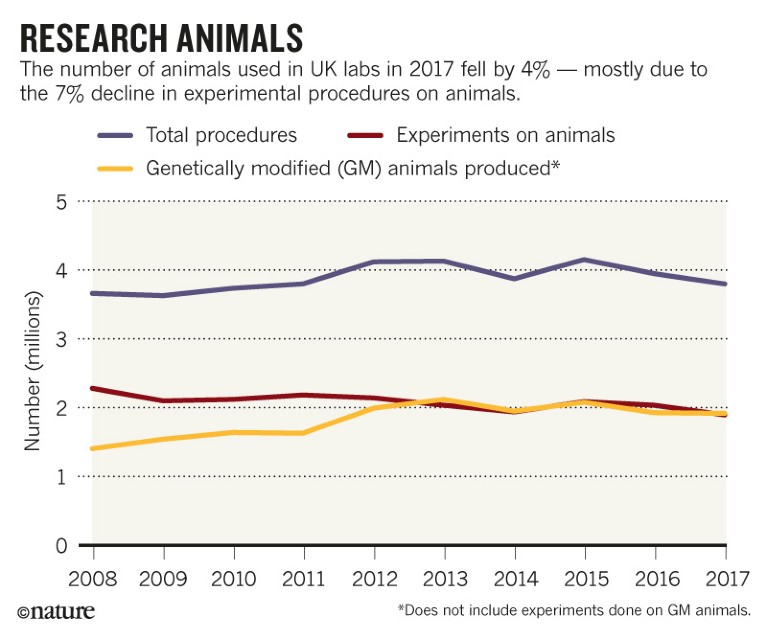TECHNIQUES
Fruit-fly brain mapped in epic detail Scientists have produced a 3D image of the brain of a fruit fly (Drosophila melanogaster) that is so detailed, researchers can trace connections between neurons across the entire organ. The data, published on 19 July (Z. Zheng et al. Cell http://doi.org/gdvjwc; 2018), also revealed some neurons that have never been seen before. The scientists cut a fly’s brain — roughly the size of a poppy seed — into more than 7,000 slices and shot a beam of electrons through them. A high-speed camera captured detailed pictures of each slice, generating about 21 million images that the team then combined using custom computer software. The resulting picture offers scientists a new tool with which to study the network of neurons behind fruit-fly behaviour.

Visualisation: Philipp Schlegel, Drosophila Connectomics Group, Cambridge
PEOPLE
Quark finder Physicist Burton Richter, who shared the 1976 Nobel Prize in Physics, died on 18 July, aged 87. In the 1960s, Richter helped to design a ring-shaped particle collider at the Stanford Linear Accelerator Center (SLAC) in California, which he used to discover a new subatomic particle in 1974. This particle, later named J/ψ, proved the existence of a fourth quark (known as charm) and garnered Richter the Nobel, which he shared with physicist Samuel Ting. Richter was the director of SLAC from 1984 to 1999, during which time he oversaw numerous developments in particle accelerators.
EVENTS
Three new ages The International Union of Geological Sciences (IUGS) has declared that we are living in a geological time period called the Meghalayan age. The period covers the most recent 4,200 years of Earth’s 4.6-billion-year history and is one of three ages newly named by the organization. Each is a climatically distinct period of the current Holocene epoch, which began at the end of the last ice age, about 11,700 years ago. The Meghalayan age started with a 200-year global drought recorded in sediment around the world; the official marker is a stalagmite in a cave in northeastern India. The preceding Northgrippian age was a relatively cold stage that began about 8,300 years ago. It followed the warmer Greenlandian age, which marked the start of the Holocene. Some scientists argue that the Holocene has given way to a new epoch called the Anthropocene, marked by human interference with the planet. But researchers disagree on when this proposed period would begin, and geological evidence for a new epoch is inconclusive.
Antibiotic worries Many low-income countries lag behind in taking action to prevent bacteria from becoming resistant to antibiotics, the World Health Organization and two other United Nations agencies said in a report on 18 July. Such steps include improving sanitation and hygiene. About one-quarter of health-care facilities in Africa still lack water, the report says. And just over half of the world’s population lives in countries that do not have a national system for monitoring the consumption of antibiotics. Roughly half of low-income countries do not require prescriptions for antimicrobials. Only 93 of 194 member states reported having developed strategies to stall resistance, the review finds.
Weapons opposition More than 2,600 people and 195 organizations have signed a pledge not to support the development, manufacture, trade or use of lethal autonomous weapons. The signatories include SpaceX chief executive Elon Musk, three co-founders of Google DeepMind and thousands of researchers in the fields of computer science, robotics and artificial intelligence. In an open letter posted online on 18 July, they argue that “the decision to take a human life should never be delegated to a machine”. The pledge was initiated by the Future of Life Institute, a research and outreach organization in Cambridge, Massachusetts, which focuses on the existential threats posed by technology. In August 2017, more than 100 specialists working in artificial intelligence and robotics called on the United Nations to ban autonomous weapons.
Sharing results A platform that allows researchers to share anonymized clinical-trial data, and that already boasts results from more than 2,500 trials involving roughly 1.3 million participants, launched on 19 July. The platform, developed by the non-profit company Vivli of Cambridge, Massachusetts, will also provide tools for analysing data across different databases, and aims to capture individual patient data from academic, industry and non-profit sponsors of clinical trials. More than 2,000 of the trials currently in the database were provided by London-based pharmaceutical giant GlaxoSmithKline.
RESEARCH
The Lorax’s origin The title character in the famed children’s book The Lorax may have been inspired by the patas monkey (Erythrocebus patas), a species found across West and East Africa, researchers reported on 23 July (N. J. Dominy et al. Nature Ecol. Evol. 2, 1196–1198; 2018). Theodor Seuss Geisel — better known by his pen name, Dr Seuss — wrote much of the book during a visit to Kenya in 1970. The patas monkey is native to the country, and a morphometric analysis described in the study has revealed similarities between the faces of the patas monkey and the Lorax.

Credit: Dr. Seuss Enterprises
Park pollution The air in US national parks contains just as much ozone pollution as the air in many of the country’s largest cities, according to a study published on 18 July (D. Keiser et al. Sci. Adv. 4, eaat1613; 2018). Researchers compared ozone levels in 33 national parks and in 20 of the largest US cities between 1990 and 2014. After controlling for weather and the season, the team found that pollution levels in the parks and cities were similar. In fact, before 2000, summer ozone levels in the parks increased before they started to drop. The study authors aren’t sure what caused this pattern. The findings raise health questions for park visitors because exposure to ozone pollution can exacerbate conditions such as asthma.
POLICY
Species in danger The US government announced several proposed changes to the Endangered Species Act, a 45-year-old law that protects thousands of threatened or endangered species. The proposals, announced on 19 July, aim to alter the protocols used for determining a species’ critical habitat and to streamline the process of listing and delisting organisms under the law. The US Fish and Wildlife Service, together with the National Marine Fisheries Service, would also change a current provision that automatically provides the same protections to threatened and endangered species, unless officials decide otherwise. The public has 60 days to comment on the proposals before the government finalizes them.
Science migration A UK parliamentary group has recommended ways in which the country’s immigration system for skilled workers such as scientists should change after Brexit to accommodate workers from the European Union. EU citizens currently have automatic rights to live and work in the United Kingdom, but it is not yet clear whether they will retain any of those rights after the Brexit process is complete. A report by the House of Commons Science and Technology Committee, published on 19 July and based on discussions with research organizations, recommends that the system allow skilled workers to visit visa-free for up to 180 days. Although the recommendations were designed to address the issue of how EU workers will come to the United Kingdom after Brexit, the same policies could also be applied to workers from other countries, the report says. For long-term stays, the committee suggests that the government remove an annual cap on the ‘Tier 2’ visa for highly skilled workers.
ENVIRONMENT
China’s emissions As the world’s largest carbon emitter, China needs to do more if the world is to meet its climate-change goals, says a 19 July report by a former senior US energy official. David Sandalow, now at Columbia University in New York City, found that China’s carbon dioxide emissions have increased by only 3% or less in the past 5 years, even as its economy has grown by 40%. The report argues that the country has enormous potential to contribute to climate-change solutions: government policies are helping to cut coal use and increase use of low-carbon alternatives, and the nation is investing in technologies such as electric vehicles and solar power. But some of its policies — such as converting coal to synthetic natural gas and financing coal power plants around the world — run counter to these goals, the report concludes.
TREND WATCH
The production of genetically modified animals has levelled off in UK laboratories, after a decade that saw a 37% rise in the number bred. Last year, 1.9 million of these animals were produced, about the same as the year before, according to annual statistics released by the UK government on 19 July. In addition, 1.9 million experimental procedures, including those used for basic research, drug studies and surgical training, were conducted on animals last year — a 7% drop since 2016 and a 17% decline since 2008.






